Seed Potatoes: Obtaining, Planting, Caring For, & Storing
Seed potatoes are how billions of potatoes, Solanum tuberosum, are produced every single year. They are the most popular form of propagation for this popular root vegetable, and have been for hundreds of years; even by Andean farmers in the potato’s native environment. Without them, it would be far harder for farmers and homesteaders to grow those delicious, extremely versatile, and nutritious potato tubers. Seed potatoes actually aren’t “seeds” at all, and they produce potatoes far more quickly than the true potato seeds. If you do not see your questions answered below or within the linked articles, please leave us a comment and I will do EVERYTHING I can to find you the answers you need!
What Is a Seed Potato, or a Potato Bulb?
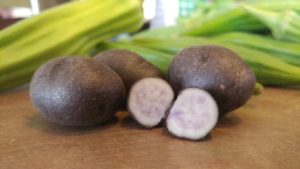 Occasionally, you will hear seed potatoes referred to as new potatoes or potato bulbs. These “seed” potatoes are not seeds at all. The true seeds are produced by the flowers that bloom within the foliage of the potato plant. They mature within small, toxic berries that form after the flower is fertilized and wilts away. These true potato seeds are rarely used for planting, as they can take an entire growing season to produce a single tiny tuber; they are generally only grown for breeding purposes. Instead, a seed potato is actually a small, tiny tuber that is produced within the root system of the potato plant; it then gives rise to new tubers once a daughter plant is established, helping to produce a fraction of the world’s fourth largest food crop. The only difference between a seed potato and a full sized potato is size. A seed tuber is generally small. Large potatoes can be used as seed potatoes as well, but they are normally used for eating instead; it’s more feasible to save smaller tubers for seeding.
Occasionally, you will hear seed potatoes referred to as new potatoes or potato bulbs. These “seed” potatoes are not seeds at all. The true seeds are produced by the flowers that bloom within the foliage of the potato plant. They mature within small, toxic berries that form after the flower is fertilized and wilts away. These true potato seeds are rarely used for planting, as they can take an entire growing season to produce a single tiny tuber; they are generally only grown for breeding purposes. Instead, a seed potato is actually a small, tiny tuber that is produced within the root system of the potato plant; it then gives rise to new tubers once a daughter plant is established, helping to produce a fraction of the world’s fourth largest food crop. The only difference between a seed potato and a full sized potato is size. A seed tuber is generally small. Large potatoes can be used as seed potatoes as well, but they are normally used for eating instead; it’s more feasible to save smaller tubers for seeding.
Choosing Potato Sets for Planting
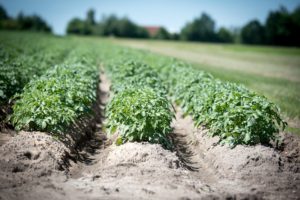 One of the first orders of business is to identify exactly what type of potato you need. Some are bred to be very starchy and large, making them perfect for a delicious mashed potato. Others can be smaller and waxy, making them better for stews. No matter how you like to eat your potatoes or the size of harvest that you’re interested in, there is a potato out there for you. There are hundreds of varieties of potato sets for planting that are within reach when you include online shopping. However, your local farm supply stores ought to have the most popular varieties that grow the best in your area. They may not have unique varieties such as Russian Banana Fingerlings, but they should have more popular ones such as Yukon Golds or Red Norlands.
One of the first orders of business is to identify exactly what type of potato you need. Some are bred to be very starchy and large, making them perfect for a delicious mashed potato. Others can be smaller and waxy, making them better for stews. No matter how you like to eat your potatoes or the size of harvest that you’re interested in, there is a potato out there for you. There are hundreds of varieties of potato sets for planting that are within reach when you include online shopping. However, your local farm supply stores ought to have the most popular varieties that grow the best in your area. They may not have unique varieties such as Russian Banana Fingerlings, but they should have more popular ones such as Yukon Golds or Red Norlands.
Preparing Seed Potatoes for Planting
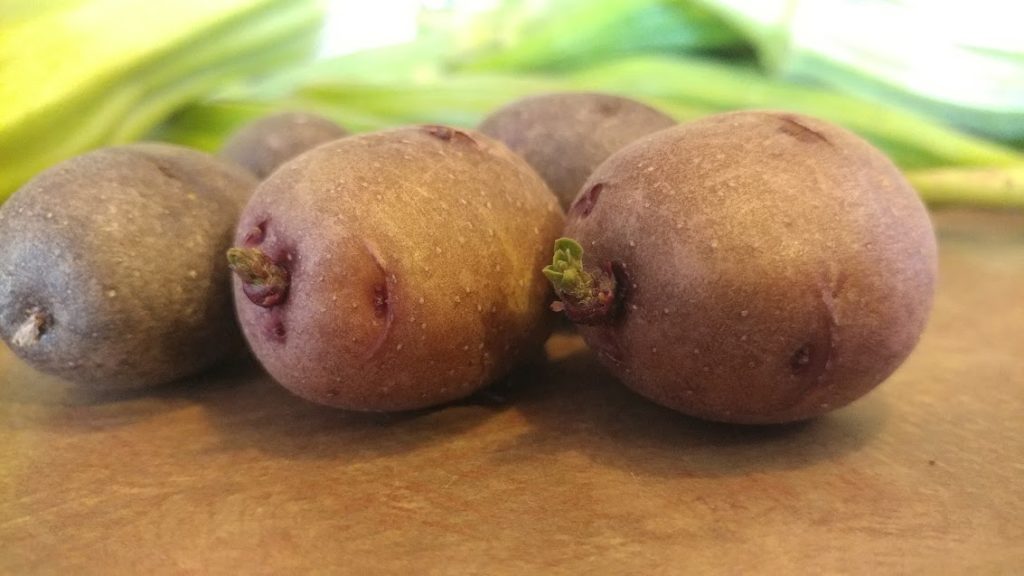
Before you can grow your seed potatoes, they will need to be looked over for imperfections and the growing program must be planned out carefully. Potatoes prefer cooler temperatures and do not perform well in heat or in freezing temperatures; you could have an extremely low yield due to heat, or a crop kill off due to freeze. They also require special care as many of their worst pests can linger underground or within the mulch, such as leaf slaying slugs that love moist, dark environments and voles that burrow underground for the delicious young tubers. Before chitting or preparing seed potatoes for growth, do a bit of research regarding your planting region’s climate to pick the perfect planting date. Potatoes generally enjoy temperatures that range within 60 to 70 degrees Fahrenheit, making early spring the best time for most people to start their seed potatoes.
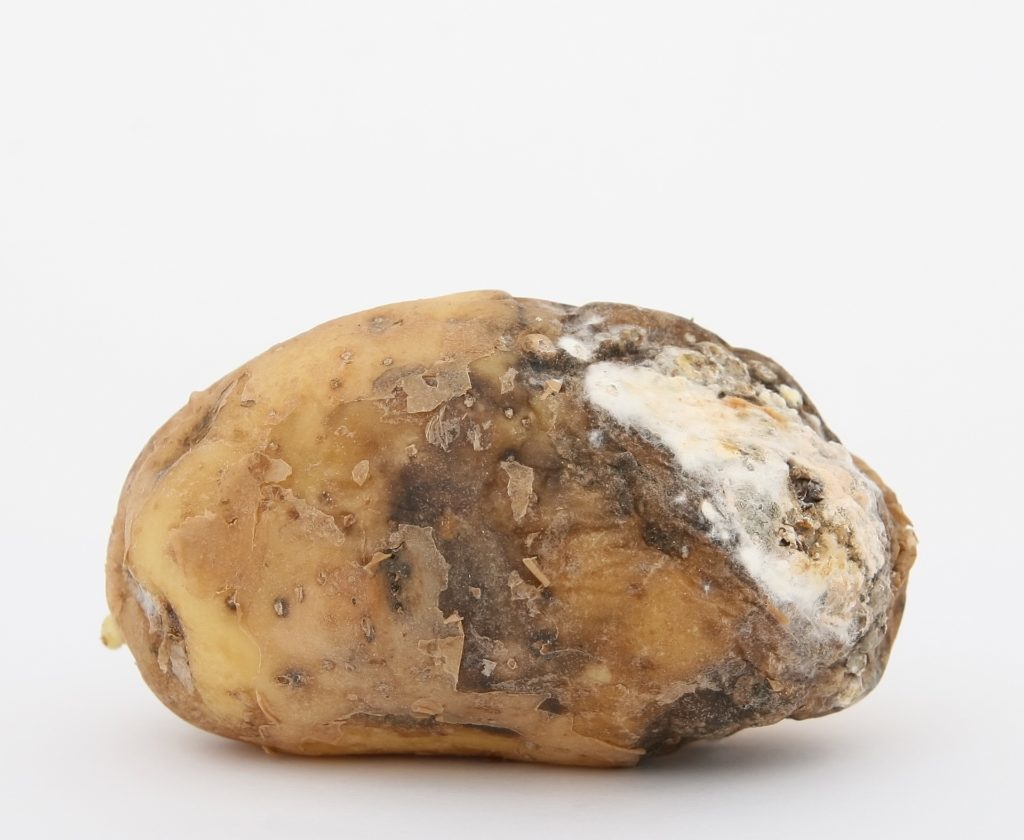
Next, you will want to look over your seed potatoes for any diseases or pests, including Black Heart Disease or Potato Scab Disease. Sometimes, seed tubers may carry these diseases through the winter and unleash them during the spring when they are planted. Scab is particularly serious, and it can decimate an entire year’s crop. It makes potatoes excessively unattractive, making it hard to sell them or even give them away. You want to look for growths, excessive lines or scarring (this is how scab appears), rotting spots, and wrinkled or sunken flesh. An unsprouted seed potato tuber will be clean and free of signs of fungus and disease, with a mostly smooth and firm appearance. Old or sprouting seed potatoes may feel wrinkly or softened. Examine any growths on potatoes carefully to ensure that they are harmless. Sometimes, potatoes will grow in funny ways. A serious of bumps and lumps could point to something more sinister.
Sprouting Seed Potatoes for Containers or the Home Garden

Now that you have some healthy, fresh seed tubers ready to go, I definitely recommend chitting them! Chitting, or sprouting seed potatoes, is a method to speed up the early growth of the potato plant and ensure that the planted tubers are alive and healthy. The best way to sprout your potato tubers is to lay them out on an egg carton, and allow them some soft light and warm temperatures. Your kitchen counter is a great place to chit potatoes! You might have accidentally chitted a few long lost bags of potatoes in your cabinet or pantry before, showing you just how hard it is to actually PREVENT them from sprouting. This makes potato plants perfect for the first time gardener.
How Do You Plant Seed Potatoes
So you have all of these lovely little spuds just dying to send out some leaves, and you’re asking “How do you plant seed potatoes?” (whether it be a container or garden!). The good news is it’s fairly hard to mess it up! You do need to make sure that the first few inches of the soil under the seed potato is loose, aerated, and contains plenty of organic material. Most of the potato plant’s delicate root system will be below the seed spud. However, you will need to make sure that it is covered up by 3 to 4 inches of loose dirt or compost (or a soiless medium of your choice). The 6 inches ABOVE the seed tuber is where you should see your full sized tubers developing. They may also be right at the same level as the original tuber. Either or, the dirt here should be nice and loose to encourage proper tuber formation and root development. Plant seed potatoes at least 8 inches apart; some plant smaller tubers closer together, and some plant whole large potatoes further apart (some potatoes can grow more than 5 plants per tuber!). For the best yield, give each plant sufficient room.
Growing Seed Potatoes
Once you get the tubers going, it’s pretty smooth sailing from there when growing seed potatoes. That is, if the pests don’t attack your potato plants! They are fairly easy to grow, but can fall victim to pill bugs (rolie polie bugs), Colorado potato beetles, voles, slugs, and dreaded diseases like blight or scab. Some areas see rare disease outbreaks when using certified potatoes. Since potatoes are early season vegetables, it’s common for the plants to become very large and therefore resistant to some pests before their numbers are high enough to do sufficient damage. This allows many homesteaders and home gardeners to dig up a large successful harvest. While growing seed potatoes, you just need to make sure any potential pest or disease is kept at bay, and offer your potatoes a bit of fertilizer if needed to encourage tuber formation. They will thrive in partial sunlight (at least 6 hours per day), and require some cool weather. Hot weather is not good for growing large edible tubers. Simply watch for your plants to bloom, and you’ll know harvest is within 4 to 6 weeks!
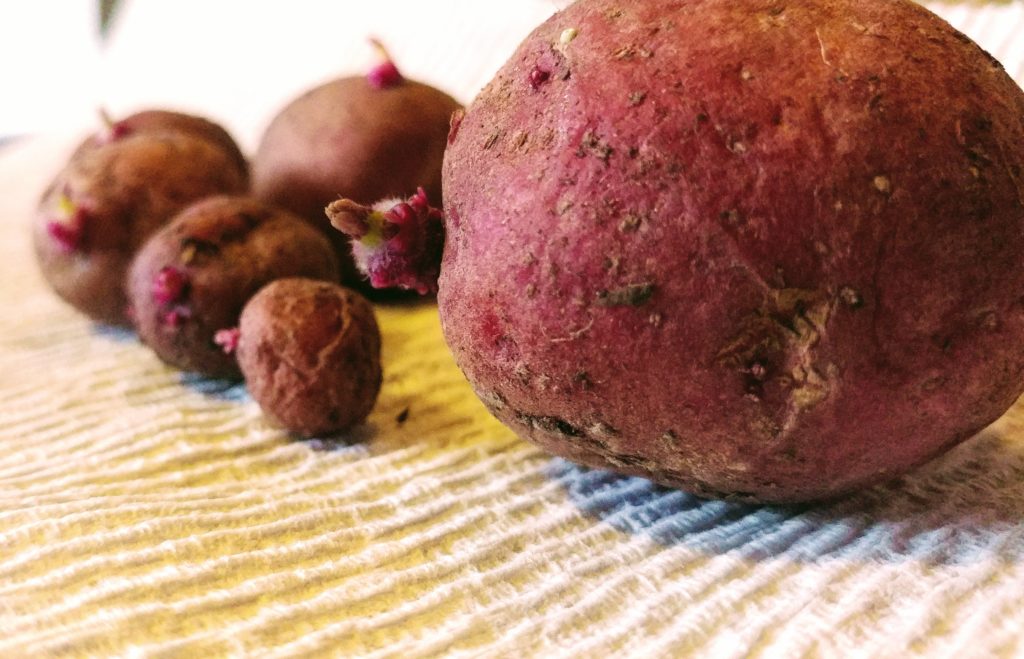
How to Plant Seed Potatoes in Raised Beds
If you intend to plant seed potatoes in raised beds, you will find that this might be the most productive method. Keep in mind that raised beds CAN be at the mercy of voles, so I advise keeping a barn cat, sound emitting repellent vole stakes, and native snakes nearby. Keep surrounding grass cut short, and do not give voles a place to hide or nest near the bed. Having an “open” potato garden bed and perimeter will minimize the appeal for voles. Once your bed area is prepared, ensure that the wood used to build the bed is not pressure treated. You don’t want chemicals to leak into your potato bed. The bed should be at least 12” tall if the root systems will not be penetrating native earth beneath the bed. IF they are, feel free to make the bed a bit more shallow! Fill the bed with 2 inches of soil, then add your seed potatoes. Cover them with 4 inches more of soil and a bit of water, then sit back and wait for your new plants to sprout! Hill them with dirt until you fill the bed, or until the plants are a foot deep. You will learn how to plant seed potatoes in raised beds in more detail by reading the attached link. This protects potatoes from sunlight, which will make potato skins turn green and they will taste quite bitter. This is due to the solanine, a chemical found in the green flesh, which can also cause headaches and cramping. Potatoes must remain in the dark, out of the sun’s rays.
Late Season Seed Potatoes
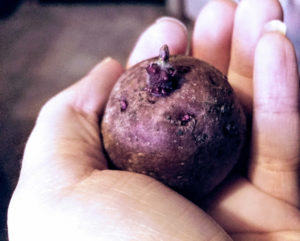 If you’re looking for a potato that tends to be on the larger side and you have the time (and growing season!) to wait, the late season potatoes are wonderful. There are a wide variety of late season seed potatoes to choose from, all with unique characteristics that will satisfy even the picky potato growers. Try checking out German Butterball, Desiree, Red Maria, Strawberry Paw, Red Pontiac, Bintje, Katahdin, Lehigh, Green Mountain, Elba, Butte, and many others! It will take up to 110-120 days for some of the late season varieties to mature, but potatoes do enjoy cool weather. This means that they will still be very successful during the very beginning and the very end of the growing season.
If you’re looking for a potato that tends to be on the larger side and you have the time (and growing season!) to wait, the late season potatoes are wonderful. There are a wide variety of late season seed potatoes to choose from, all with unique characteristics that will satisfy even the picky potato growers. Try checking out German Butterball, Desiree, Red Maria, Strawberry Paw, Red Pontiac, Bintje, Katahdin, Lehigh, Green Mountain, Elba, Butte, and many others! It will take up to 110-120 days for some of the late season varieties to mature, but potatoes do enjoy cool weather. This means that they will still be very successful during the very beginning and the very end of the growing season.
Best Seed Potatoes for New Potatoes
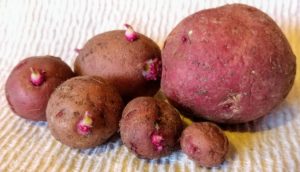 New potatoes are delicious, immature potatoes with a tender skin; they are absolutely ravishing when roasted with aromatic herbs and served with a juicy roasted chicken. There are several different strains of potatoes that are grown for new potatoes, but the preferred method of cooking is going to be what determines which are the best seed potatoes for new potatoes. There are both waxy varieties and fluffy/mealy varieties, so you will need to view the characteristics of the many different ideal new potatoes to decide. Dark Red Norlands, All Blues, and Amarosas are among the names on the new potato list!
New potatoes are delicious, immature potatoes with a tender skin; they are absolutely ravishing when roasted with aromatic herbs and served with a juicy roasted chicken. There are several different strains of potatoes that are grown for new potatoes, but the preferred method of cooking is going to be what determines which are the best seed potatoes for new potatoes. There are both waxy varieties and fluffy/mealy varieties, so you will need to view the characteristics of the many different ideal new potatoes to decide. Dark Red Norlands, All Blues, and Amarosas are among the names on the new potato list!
Where Can I Buy Seed Potatoes Near Me?
Seed potato season is generally in full swing during the late winter and very early spring. Therefore, you will stand your highest chance of locating some seed spuds around this time. When you ask “Where can I buy seed potatoes near me?”, try thinking about all of the farm and garden stores that you have locally. If you are located in the United States, you might want to seek out your local farmer’s Co-Op or your independent county farm store. Here, you will find varieties that will produce well locally, and some that may have been produced rather locally. They tend to be the cheapest when sourced from farm stores, as well. If you do not have one of these stores nearby, you should check out home improvement stores (such as TSC, Lowe’s, or Home Depot) and local landscaping or nursery stores. Home improvement stores tend to have seed potatoes in from national distributors, even though they might be a bit expensive. As a last resort, some department stores even carry seed potatoes. Check out the garden center at your local Walmart, or check out Target. Another option would be to grow potatoes from the grocery store, but these won’t be certified seed potatoes. You could wind up with an outbreak of a disease within your soil using grocery potatoes, but they are ALSO the absolute cheapest method you could use. I have arranged this list in the order that I would go, but it is entirely up to you and what is available to you!